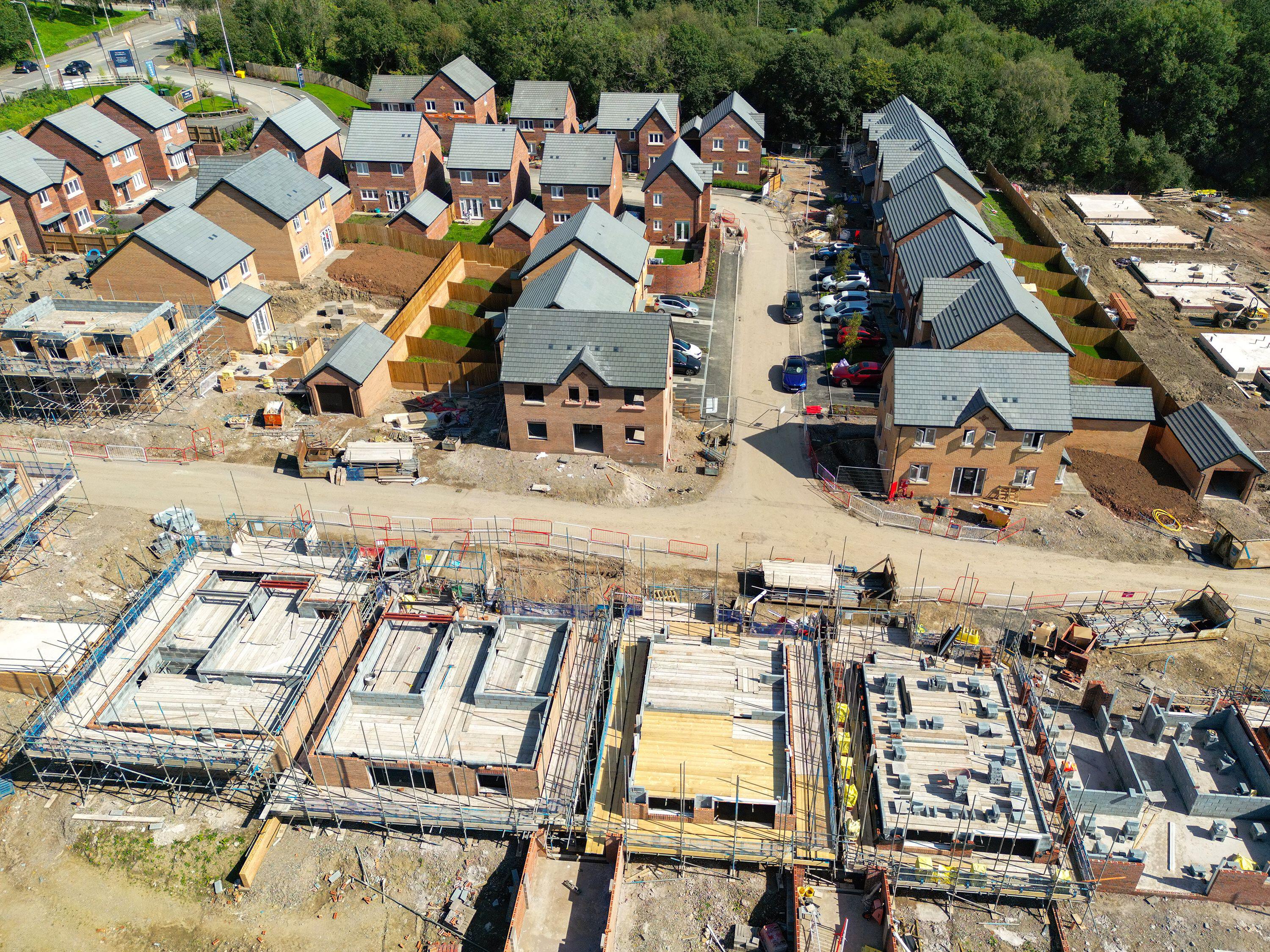Labour’s Affordable Housing Strategy Requires Greater Flexibility
Labour’s initiative mandating developers to allocate at least 50 percent of “grey belt” land for affordable housing is impractical for 80 percent of small development sites, according to new research by the tech company Viability.
The study suggests that adjusting the government’s proposed “golden rule” from 50 percent to 35 percent would enhance feasibility for small developers.
Viability examined the viability of potential small-scale grey belt locations within London’s green belt, an area characterized by soaring house prices, where developers are expected to achieve reasonable returns.
The research assumed a minimum 20 percent profit margin for sustainability and access to bank funding for developers. Moreover, it posited that landowners would sell only if offered at least 10 percent above the existing land value.
The findings indicate that enforcing the government’s target would make 80 percent of the sites highly risky from a financial perspective, which would hinder their development. However, if the affordable housing requirement was lowered to 35 percent, the viability of sites would increase to 30 percent.
The government aims to revamp the planning system to facilitate the construction of 1.5 million new homes over the next four years, including on previously developed green belt land that requires repurposing, referred to as the grey belt.

Local councils in England are now under mandatory housing targets, with Deputy Prime Minister Angela Rayner communicating to council leaders that fostering home construction is not just a professional role but a “moral obligation.”
The Ministry of Housing, Communities and Local Government has opened a consultation on the planned reforms, which will close on September 24. This proposal states that the 50 percent affordable housing target is “subject to the viability” of the site. Developers seeking to build less than this threshold must submit a viability assessment, which local planning authorities may reject if they believe the developer is overpaying for the land.
The consultation is also inquiring whether local planning bodies should be permitted to establish lower targets in “low land-value areas” to incentivize construction in northern England.
Henry Mayell, co-founder of Viability, praised the government’s initiative to promote housebuilding but stressed the need for flexibility to alleviate costs for small developers taking on modest sites.
“It’s positive to identify additional land as potential opportunities, but it remains vital for developers to determine if projects are financially viable,” he commented.
Small developers account for about 25 percent of the 200,000 homes built annually. Mayell noted they must consider varied costs, such as land cleanup, enhancing biodiversity, and adding local infrastructure alongside the housing mix.

Typically, affordable housing costs between 85 and 90 percent of the price needed for homes aimed at the private market. However, these homes are sold to housing associations and local authorities at 50 to 70 percent of the market price.
“Selling affordable homes incurs losses, so the profit margins primarily stem from market homes,” Mayell explained. He noted that while developers are often perceived as greedy, it is crucial for them to maintain profitability to sustain operations. With new regulations, the financial landscape is getting increasingly challenging, particularly with the introduction of biodiversity net gain, which could substantially inflate site costs.
He added, “Ultimately, the decisive factor for developers is the project’s financial viability. This will determine the delivery of homes.”
The Ministry for Housing, Communities and Local Government responded to Viability’s findings, stating, “We don’t recognize these figures. In exceptional scenarios, such as substantial infrastructure needs, developers may have some leeway. However, strong evidence is required to justify any deviations from our affordable housing expectations. Everyone must contribute to addressing the housing need.”

The Home Builders Federation acknowledged the government’s positive steps towards enhancing the planning procedure. However, Executive Director David O’Leary warned that policy costs imposed by various governments have surged in recent years due to factors such as the future homes standard and the biodiversity net gain requirement, compounded by a significant reduction in government grants for housing associations aimed at affordable housing.
“It is appropriate for public bodies to determine the social benefits derived from development, as long as sites remain viable. However, there must be an acknowledgment from lawmakers at both local and national levels that few sites can meet all demands. Setting unattainably high targets could halt development altogether, jeopardizing overall supply levels,” he cautioned.
Viability provides automated land assessment solutions for small developers, streamlining data collection and analysis typically available only to larger industry players. The company aims to leverage accurate data to enable more small property developers to work effectively with local authorities in home construction efforts.
Viability has secured funding from the government’s innovation agency, Innovate UK, for its technology development. Co-founder Paul Higgs, a former head of land at Barratt Development, and CEO Adria Tarrida are among its investors. The company is set to officially launch on September 16, following two years of development.
“We established this business to address the housing crisis and support SME developers,” Mayell concluded. “The traditional process for developers begins with identifying potential land parcels, ideally off-market sites, which offer optimal profitability. While numerous tools aid in identifying these opportunities, navigating through complexities begins once a site is located.
“We aim to facilitate the initial stage, which often consumes weeks or even months for developers to arrive at a financial figure suitable for negotiations with landowners.”
Initial tests of Viability’s software indicated that tasks that once required two days can now be completed in just two minutes, achieving accuracy within 2 percent of the developers’ estimations.




Post Comment